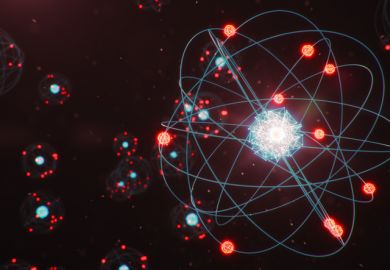The problem with particle physics is that it contains ideas that have only relatively recently been united in a coherent theory. Teaching it to undergraduates can therefore sometimes be a challenge. If approached from a historical perspective, the subject can become disjointed and confusing. If approached rigorously and formally, the subject can quickly become too advanced mathematically. The first edition of this textbook was notable for providing a clear and logical overview of particle physics that was at the right level for advanced undergraduates.
This text covers most aspects of particle physics. It starts with an overview of fundamental particles and forces, and leads into descriptions of symmetries, bound states, the development of the formal structure of the Standard Model (including Feynman rules and simple calculations), and a final discussion of what physics mechanisms may lie beyond it.
The contents of this revised edition are largely similar to those contained in the first edition and changes reflect the development of the subject in the intervening 20 years. As a result, some discussions have now been tightened or removed, and chapters describing neutrino oscillations and contemporary theoretical developments have been added.
Each chapter introduces and develops a separate topic logically. The text is clear, well referenced and contains many illustrative diagrams. Proofs are annotated to give physical insight into the equations and also, importantly, note where assumptions have been made and where confusion can occur. Worked examples are included, and further problems given at the end of each chapter. Lecturers can obtain solutions to these problems from the publisher. The layout overall is attractive and well spaced, but the second edition is a paperback and much reading of this heavy book can quickly damage the spine.
The level of explanation employed is simpler and offers more physical insights than are typically found in postgraduate texts and is more advanced than in introductory texts such as B.R. Martin and G. Shaw's Particle Physics. Advanced undergraduates will benefit from studying this book, as will all experimental particle physics postgraduate students. I'd recommend this book to anyone in the field and anyone lecturing in it. It's wonderful. Reading any section will always yield insights, and you can't go wrong with Griffiths as a guide.
Who is it for? Advanced undergraduates, postgraduates, lecturers and anyone in the field of experimental particle physics.
Presentation: Clear, logical presentation sprinkled with insight. Would you recommend it? Definitely. It is a must for anyone serious about the topic.
Introduction to Elementary Particles
Author: David Griffiths
Edition: Second revised
Publisher: Wiley
Pages: 470
Price: £60.00
ISBN: 97835406012
Register to continue
Why register?
- Registration is free and only takes a moment
- Once registered, you can read 3 articles a month
- Sign up for our newsletter
Subscribe
Or subscribe for unlimited access to:
- Unlimited access to news, views, insights & reviews
- Digital editions
- Digital access to THE’s university and college rankings analysis
Already registered or a current subscriber? Login



